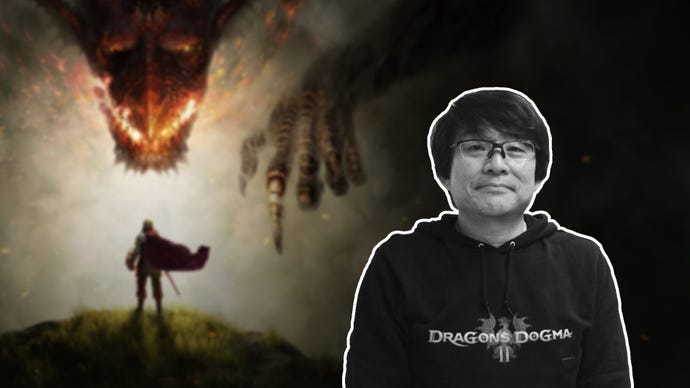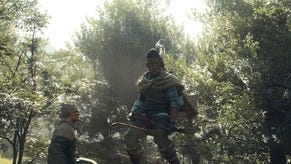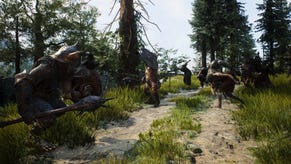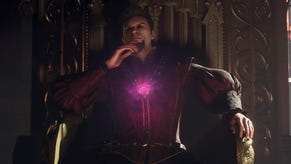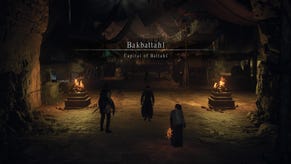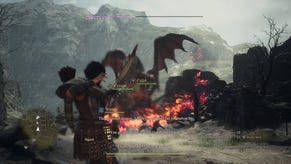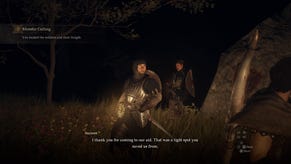Dragon’s Dogma 2 took five years to develop - but the ideas behind it have been 12 years in the making
The highly-anticipated sequel promises to achieve what director Hideaki Itsuno wanted to do over a decade ago – and he's excited for you to see his vision finally come to life.
Hideaki Itsuno doesn’t want you to call Dragon’s Dogma a cult hit. Speaking to the legendary developer behind Capcom’s new RPG powerhouse as well as classics like Power Stone, Rival Schools, and Devil May Cry, I’m stopped short when I describe the 2012 original in those terms.
“I'd like to think we don't need to call it that anymore,” Itsuno suggests with a thoughtful tilt of the head.
“It's been a long time since the first game came out, and over the years I think it's sold its way and made its way into many gamers' hearts. Hopefully now that we're on the eve of releasing Dragon's Dogma 2, we can finally just say that it's a popular, well-selling series that lots of gamers love, rather than treating it as a cult concern.”
In fairness to the man, he’s right. The original Dragon’s Dogma has now sold somewhere over 7 million copies. To compare it to some other Japanese-originating role-playing adventures, that’s similar numbers to the barnstorming success of Persona 5, more than several Final Fantasy games, and more even than several FromSoftware Souls titles, before the last few games had truly explosive success. Dragon’s Dogma is big.
The wait for it has been big, too. After its 2012 release and an expanded 2013 follow-up, the series seemed poised to immediately continue and keep growing, especially as it fostered an audience of die-hard fans who fell in love with its systems-driven, slightly esoteric, joyously reactive world. But then, but for a Japan-only online spin-off that Itsuno wasn’t involved with (and a few ports), the series went dormant.
The gap is something Itsuno appears to slightly regret - though he’s also embracing of the pause between games, mindful of what it’s afforded them as developers.
“I've been looking to make this game ever since the original came out,” Itsuno admits. But he had other things to do - assisting in various projects across Capcom, and delivering Devil May Cry 5, which went on to become one of Capcom’s top 10 best selling games of all time.
“I always really wanted to continue this series. But we had all these other plans made - and it's not just me, of course, but it's about the rest of the development team's resources and availability. Those stars also have to align.
.jpg?width=690&quality=70&format=jpg&auto=webp)
“So ultimately it was about 5 years ago from now, around 2019, when all of those things came together. That allowed me to finally get back in and get out the Dragon's Dogma mold. That meant that by the time the game was finished here we are, about 12 years after the last game. So it's a 'kept you waiting, huh?' kind of situation, but we finally got to it.”
Dragon’s Dogma 2 launches into a curious situation. The world has changed quite a lot within the genre it inhabits. A few months before the first DD launched, Dark Souls made its debut, proving that FromSoftware’s hard-as-nails and wilfully obtuse RPG Demon’s Souls wasn’t a cult fluke - it was creating a whole new genre. DD1 was inspired by Oblivion and Fallout 3 - but it launched in the wake of Skyrim. Since then we’ve had open world Zelda and Final Fantasy, we’ve had The Witcher 3, and, yes, we’ve had a GOAT fusion of several of these ideas in Elden Ring.
Despite all of this, Dragon’s Dogma 2 feels surprisingly and refreshingly unbothered about much that has happened around it since. It doesn’t feel very interested in chasing any recent trends. You won’t be climbing towers to fill in your damn map, and combat hasn’t been retooled to have the deliberately over-bearing heft of a Souls. It’s primarily a response to one game and one game only - the original Dragon’s Dogma.
“Thinking about the way the industry developed since DD1, I wish there had been two of me and two teams,” Itsuno laughs. “We could have had one of me work on DMC and the other one keep going on Dragon's Dogma straight away. It would've been a chance to be involved with that kind of games industry trend development in the early 2010s.”
The gap has allowed one key thing to happen, however: it’s allowed the hardware to catch up with Itsuno’s vision for the software. After the launch of the original Dragon’s Dogma, Itsuno candidly revealed that the final released game was only 60-70% of his original planned vision. Ultimately, his team’s developmental appetites were bigger than the bellies of the machines the game had to run on.
.jpg?width=690&quality=70&format=jpg&auto=webp)
“It’s now been two full generations since the PS3 and Xbox 360 that the original game launched on, and I kind of feel like it all worked out in the end for my concept for Dragon's Dogma,” Itsuno muses.
“The hardware has finally caught up with what I wanted to achieve. As you mentioned, I could literally take my to-do list of things that I had to leave out or cut and start implementing them on the new game. So I've been really pleased to be able to finally bring some of that stuff to fruition.”
And this time? Well, Itsuno won’t be drawn on exactly how Dragon’s Dogma 2 has ended up when compared to his original design documents. Perhaps being endlessly asked in interviews by Dogma nerds like me about GDC presentation slides about cut content has made him a bit more wary of sharing. Who could blame him? But he gives the impression of someone very content with the game he’s made - if candid about one unending reality of games development, and the creation of art in general.
“Obviously all game developers feel like we could've done more. Every media project or artwork - there’s a saying that you have to ‘abandon them, not finish them’,” Itsuno admits when prodded on how Dragon’s Dogma 2 stacks up to his loftiest expectations from the very start of development.
“But I’ve basically done all I could with this game. Of course, I would’ve liked to do some more - but this definitely doesn’t feel unfinished. I don’t want to give the impression at all that this is a game with incompleteness. But I always feel like as an artist, as a creator, I could do more and I could go further in the future.
“This is the game I want to launch, that’s launching.”
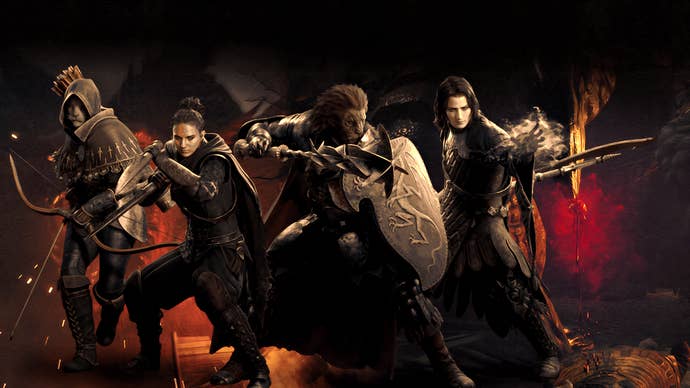
Does that mean everything from Dragon’s Dogma’s design document is in? Well, the answer is inevitably complicated. It clearly is packed with new ideas, as well as old ideas revisited, polished, and dialed up to 11. Those original design documents had wild possibilities - alternate worlds, hidden kingdoms, and even ending up fighting on the moon. When I ask about the moon, for example, Itsuno laughs and offers a little shrug.
“The word 'Moon' could be involved in some ways, so I'll leave it at that and ask everyone to discover the details,” he grins.
Dragon's Dogma 2 is due out March 22, planned for release on PC, PS5, and Xbox Series X/S. You can read our preview here.
